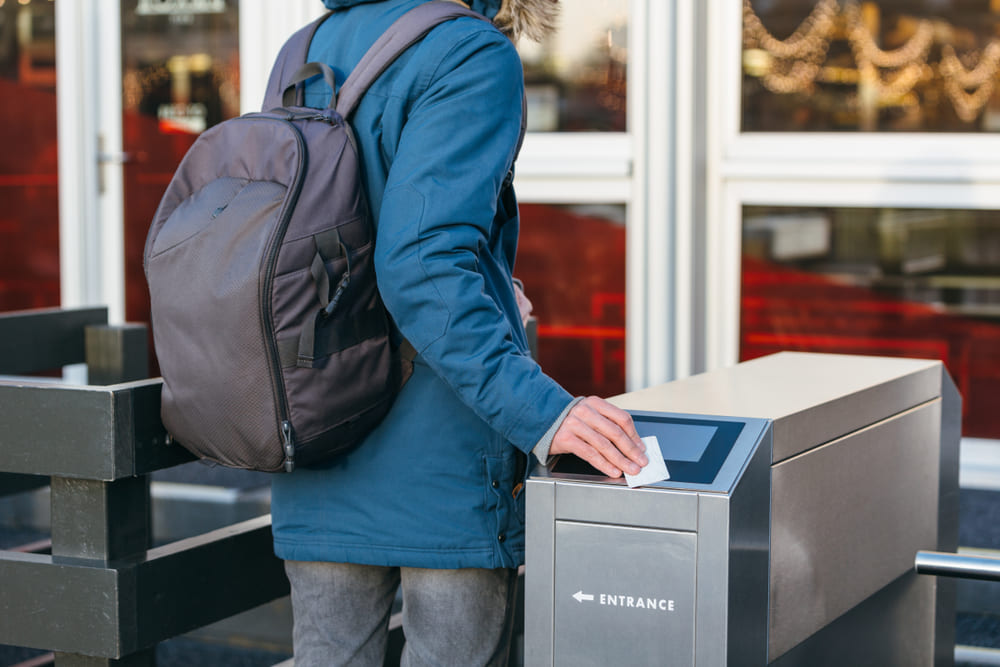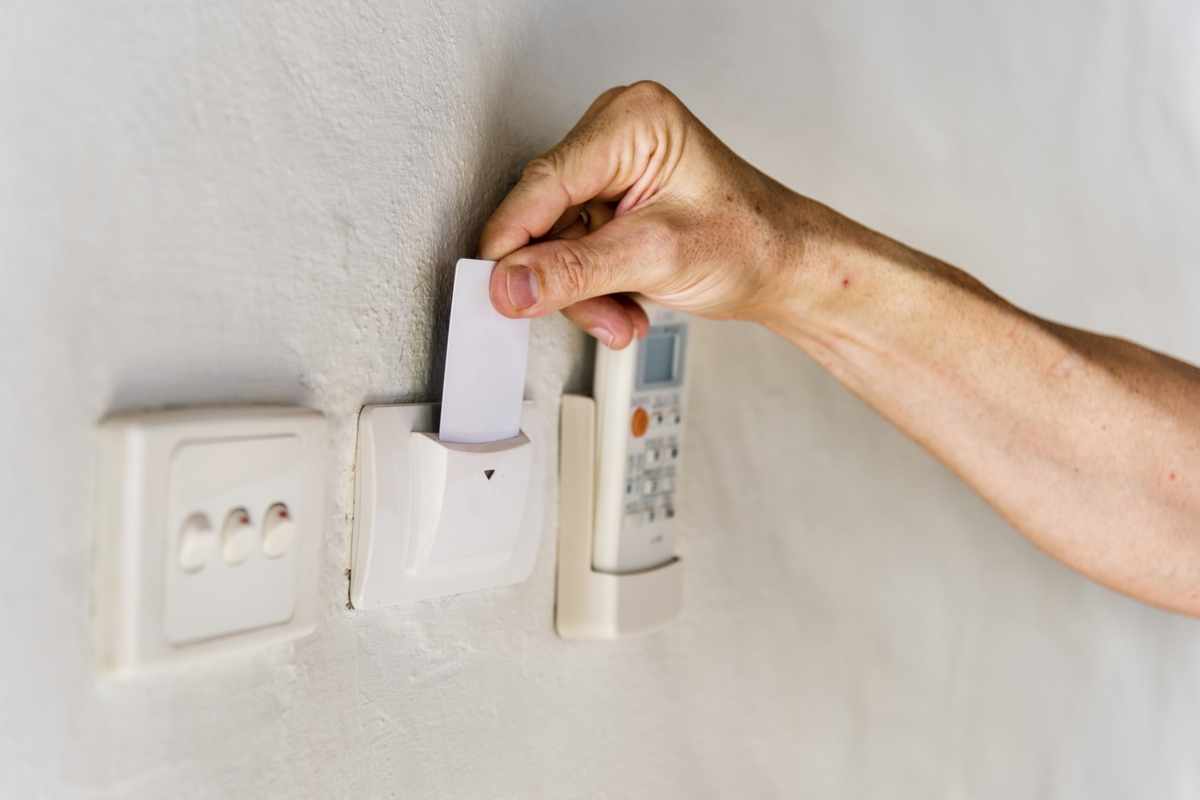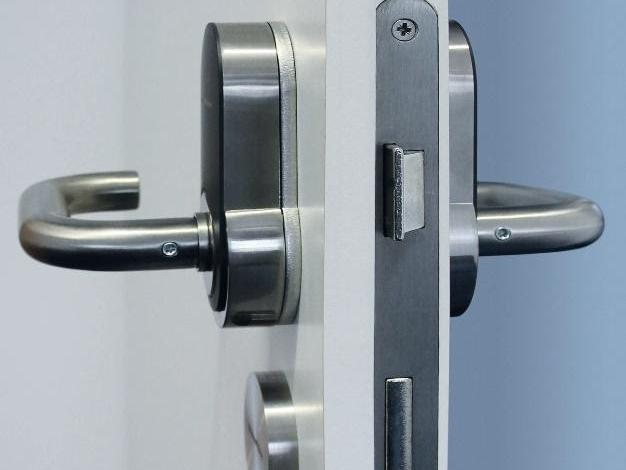
How Electronic Co-Living Spaces Door Locks Work
These high-tech locks offer co-living a range of benefits over traditional mechanical locks, including enhanced security, convenience, and flexibility.
Electronic Co-Living Spaces Door Locks:
As technology continues to evolve, the use of electronic door locks in co-living spaces has become increasingly popular. These high-tech locks offer a range of benefits over traditional mechanical locks, including enhanced security, convenience, and flexibility. But how do these electronic door locks work? Take a look at the technology behind these locks and how they operate to keep residents safe and secure.

▶ Types of Electronic Door Locks
Before we dive into how electronic door locks work, let's first take a look at the most popular types of electronic locks available in the market.
1. Magnetic Stripe Locks
Magnetic stripe locks are one of the earliest types of electronic door locks. These locks use a magnetic stripe card, similar to a credit card, to unlock the door. The card is programmed with a unique code that corresponds to the lock, allowing guests to access their room.

2. Smart Card Locks
Smart card locks are an advanced version of magnetic stripe locks. These locks use a smart card, which contains a microchip that stores the room access code. When the guest inserts the card into the lock, the microchip communicates with the lock's reader, and the door is unlocked.

3. Proximity Card Locks
Proximity card locks are similar to smart card locks but use radio frequency identification (RFID) technology to communicate with the lock's reader. The guest holds the card near the lock, and the lock's reader detects the card's signal, unlocking the door.

▶ How Electronic Co-living Door Locks Work
Now that we've explored the different types of electronic door locks let's take a closer look at how these locks work.
Programming the Lock
The first step in installing an electronic co-living space door lock is to program the lock with a unique access code. This code can be programmed using a specialised software program, which is often provided by the lock manufacturer. The access code is typically a combination of numbers or letters, and it can be changed or updated as needed.
Issuing Access Credentials
Once the lock is programmed, the next step is to issue access credentials to the tenants. This can be done using a magnetic stripe card, a smart card, a proximity card, or another type of access device, depending on the type of lock installed. The access credentials are programmed with the access code, and they can be activated or deactivated as needed.
Unlocking the Door
When a tenant wants to enter their room, they present their access credentials to the lock. The lock's reader reads the access code, and if it matches the code programmed into the lock, the door is unlocked. Some locks also require the resident to enter a PIN code, providing an additional layer of security.
Monitoring Access Activity
Electronic door locks can also monitor access activity, by creating logs of who accessed the room or facility at what time. This can prove to be valuable information if ever there were to be nefarious activity on the property.
▶ Benefits of Using Electronic Door Locks in Co-living Buildings
Electronic door locks offer a range of benefits over traditional mechanical locks, including:
There is no need for hardwiring or running cables to the doors
SimonsVoss’ electronic doors are battery operated so there is no electricity consumption making the electronic locks more eco friendly and more cost effective
Enhanced security for residents and building staff - Keyless entry systems provide a higher level of security compared to traditional lock and key systems. The risk of lost or stolen keys is eliminated, reducing the possibility of unauthorised access to residents' rooms or common areas and provides peace of mind to building staff responsible for the security of the premises
Increased convenience for tenants - these state-of-the-art keyless entry systems offer unmatched convenience for co-living space tenants as it eliminates the hassle of managing and keeping track of multiple keys. Now tenants can easily access the building and their living spaces with a simple swipe or tap, enhancing their overall living experience
Flexibility to choose a system that suits the building's needs - the systems can be customised according to the building’s needs. The flexibility of keyless entry systems ensures that operators can select the solution that aligns with their budget, technological capabilities, and the preferences of their tenants
Customisation with the building's branding - keycards can be customised to include the building's logo or branding. This kind of personalisation might seem small, but it adds a touch of identity to the access cards and fosters a sense of community among residents
Remote access control for easy management - access control systems often come with remote access control capabilities, allowing building managers to grant or revoke access permissions from a centralised device or software platform
The benefits of using electronic door locks in co-living spaces are endless. As technology continues to evolve, electronic door locks will likely become even more advanced, providing co-living spaces with new and innovative ways to enhance resident security and convenience.
SimonsVoss has over 25 years of experience customising and installing keyless entry systems in various buildings and organisations. The system3060 has proven to be an all-inclusive digital locking solution catering to the safety and needs of many. From the barrier to doors, gates, lifts and turnstiles, there is nothing that System 3060 cannot do. If your co-living building needs a security upgrade, don't hesitate to contact SimonsVoss for more information about our state-of-the-art keyless entry systems for your co-working space.
